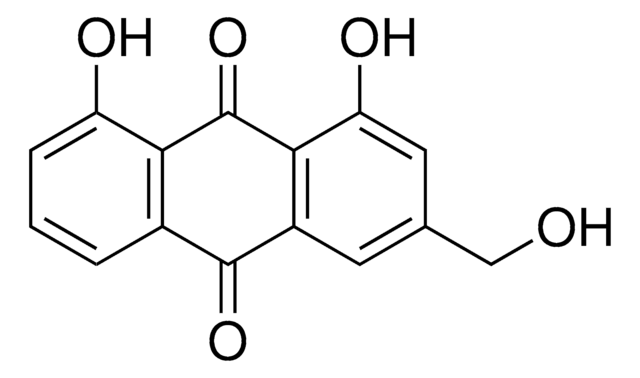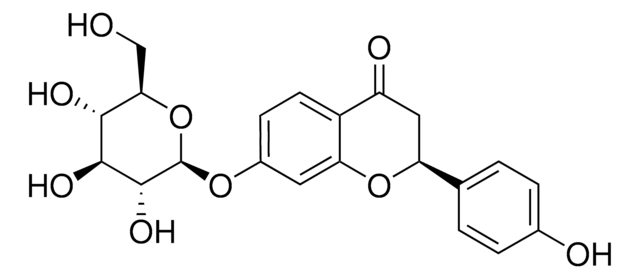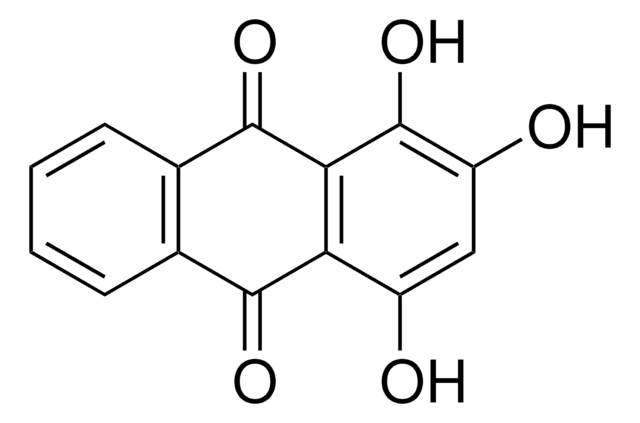PHL89157
Aloe-emodin
phyproof® Reference Substance
Synonim(y):
1,8-Dihydroxy 3-hydroxymethylanthraquinone, 1,8-Dihydroxy-3-(hydroxymethyl)anthraquinone, 3-Hydroxymethylchrysazine, Rhabarberone
About This Item
Polecane produkty
klasa czystości
primary reference standard
linia produktu
phyproof® Reference Substance
Próba
≥95.0% (HPLC)
Postać
solid
producent / nazwa handlowa
PhytoLab
metody
gas chromatography (GC): suitable
liquid chromatography (LC): suitable
Zastosowanie
cannabis testing
format
neat
ciąg SMILES
OCc1cc(O)c2C(=O)c3c(O)cccc3C(=O)c2c1
InChI
1S/C15H10O5/c16-6-7-4-9-13(11(18)5-7)15(20)12-8(14(9)19)2-1-3-10(12)17/h1-5,16-18H,6H2
Klucz InChI
YDQWDHRMZQUTBA-UHFFFAOYSA-N
Szukasz podobnych produktów? Odwiedź Przewodnik dotyczący porównywania produktów
Powiązane kategorie
Opis ogólny
Zastosowanie
Działania biochem./fizjol.
Inne uwagi
Informacje prawne
Hasło ostrzegawcze
Warning
Zwroty wskazujące rodzaj zagrożenia
Zwroty wskazujące środki ostrożności
Klasyfikacja zagrożeń
Acute Tox. 4 Oral
Kod klasy składowania
11 - Combustible Solids
Klasa zagrożenia wodnego (WGK)
WGK 1
Temperatura zapłonu (°F)
Not applicable
Temperatura zapłonu (°C)
Not applicable
Choose from one of the most recent versions:
Masz już ten produkt?
Dokumenty związane z niedawno zakupionymi produktami zostały zamieszczone w Bibliotece dokumentów.
Klienci oglądali również te produkty
Nasz zespół naukowców ma doświadczenie we wszystkich obszarach badań, w tym w naukach przyrodniczych, materiałoznawstwie, syntezie chemicznej, chromatografii, analityce i wielu innych dziedzinach.
Skontaktuj się z zespołem ds. pomocy technicznej








